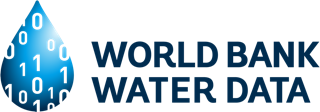Over the past decade, Albania has been undergoing a transition toward a market economy and a more open society. It has faced severe internal and external challenges, such as lack of basic infrastructure, rapid collapse of output and inflation rise after the collapse of the communist regime, turmoil during the 1997 pyramid crisis, and social and economic instability because of the 1999 Kosovo crisis. Despite these shocks, Albanian economy has recovered from a very low income level through a sustained growth during the past few years, even though it remains one of the poorest countries in Europe, with GDP per capita at around 1,300$. Based on the Living Standard Measurement Study (LSMS) 2002 survey data (wave 1, henceforth), for the first time in Albania INSTAT has computed an absolute poverty line on a nationally representative poverty survey at household level. Based on this welfare measure, one quarter (25.4 percent) of the Albanian population, or close to 790,000 individuals, were defined as poor in 2002. The distribution of poverty is also disproportionately rural, as 68 percent of the poor are in rural areas, against 32 percent in urban areas (as compared to a total urban population well over 40 percent). These estimates are quite sensitive to the choice of the poverty line, as there are a large number of households clustered around the poverty line. Income related poverty is compounded by the severe lack of access to basic infrastructure, education and health services, clean water, etc., and the ability of the Government to address these issues is complicated by high levels of internal and external migration that are not well understood. The availability of a nationally representative survey is crucial as the paucity of household-level information has been a constraining factor in the design, implementation and evaluation of economic and social programs in Albania. Two recent surveys carried out by the Albanian Institute of Statistics (INSTAT) –the 1998 Living Conditions Survey (LCS) and the 2000 Household Budget Survey (HBS)– drew attention, once again, to the need for accurately measuring household welfare according to well-accepted standards, and for monitoring these trends on a regular basis. This target is well-achieved by drawing information over time on a panel component of LSMS 2002 households, namely the Albanian Panel Survey (APS), conducted in 2003 and 2004. An increasing attention to the policies aimed at achieving the Millennium Development Goals (MDGs) is paid by the National Parliament of Albania, recently witnessed by the resolution approved in July 2003, where it pushes “[...] the total commitment of both state structures and civil society to achieve the MDGs in Albania by 2015”. The path towards a sustained growth is constantly monitored through the National Reports on Progress toward Achieving the MDGs, which involves a close collaboration of the UN with the national institutions, led by the National Strategy for Social and Economic Development (NSSED) Department of the Ministry of Finance. Also, in the process leading to the Poverty Reduction Strategy Paper (PRSP; also known in Albania as Growth and Poverty Reduction Strategy, GPRS), the Government of Albania reinforced its commitment to strengthening its own capacity to collect and analyze on a regular basis information it needs to inform policy-makers. In its first phase (2001-2006), this monitoring system will include the following data collection instruments: (i) Population and Housing Census; (ii) Living Standards Measurement Surveys every 3 years, and (iii) annual panel surveys. The focus during this first phase of the monitoring system is on a periodic LSMS (in 2002 and 2005), followed by panel surveys on a sub-sample of LSMS households (APS 2003, 2004 and 2006), drawing heavily on the 2001 census information. Here our target is to illustrate the main characteristics of the APS 2004 data with reference to the LSMS. The survey work was undertaken by the Living Standards Unit of INSTAT, with the technical assistance of the World Bank.


